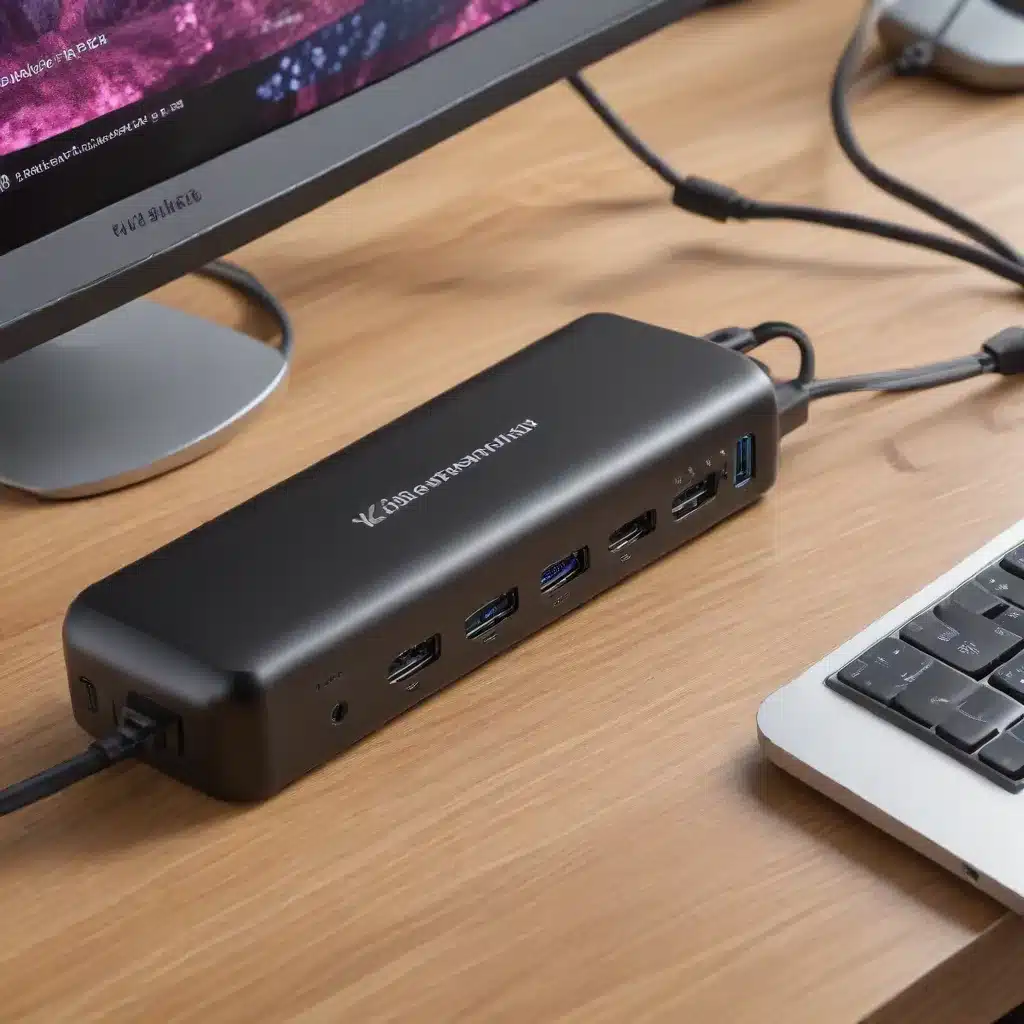
Laptop Peripheral Connectivity: Leveraging USB, Thunderbolt, and Docking Stations
The Evolving Landscape of Laptop Connectivity
In the ever-changing world of technology, the way we connect our laptops to peripherals has undergone a significant transformation. Gone are the days of tangled cables and limited connectivity options. Today, the rise of USB-C and Thunderbolt technologies has ushered in a new era of seamless, high-performance laptop integration. As seasoned IT professionals, we’re here to provide you with practical insights and in-depth guidance on leveraging these advancements to streamline your computing experience.
Understanding USB-C and Thunderbolt Connectivity
At the heart of this connectivity revolution are the USB-C and Thunderbolt standards. USB-C is a versatile, reversible connector that can handle a wide range of functions, from data transfer and charging to video output. Thunderbolt, on the other hand, is a more advanced protocol that builds upon the capabilities of USB-C, offering significantly faster data speeds, improved video support, and enhanced security features.
The key distinction between the two lies in their underlying technology and performance capabilities. While all Thunderbolt ports are compatible with USB-C, not all USB-C ports support the Thunderbolt protocol. This nuance is crucial when selecting the right docking station or peripheral for your laptop.
Maximizing Productivity with Docking Stations
The real game-changer in the world of laptop connectivity is the humble docking station. These versatile hubs allow you to transform your laptop into a fully-fledged desktop setup, seamlessly integrating a wide range of peripherals, displays, and data storage devices.
When choosing a docking station, several factors come into play:
Port Selection
Ensure the dock provides the necessary HDMI, DisplayPort, USB-A, and USB-C ports to support all your peripherals. This flexibility ensures you can connect everything from keyboards and mice to external hard drives and network adapters.
Video Output
Look for docks that can drive multiple high-resolution displays, enabling you to boost your productivity with an expanded workspace. The latest Thunderbolt 4 docks can even power dual 4K displays at 60Hz or a single 8K display.
Power Delivery
Opt for docks that can charge your laptop at high wattages, eliminating the need for a separate power adapter and allowing you to power your device directly through the dock.
Compatibility
Verify the dock is compatible with your specific laptop and operating system for seamless integration. This will ensure a plug-and-play experience without the need for complex configuration or third-party drivers.
Thunderbolt 4: The Next Generation of Connectivity
The latest iteration of the Thunderbolt standard, Thunderbolt 4, takes laptop connectivity to new heights. Offering data transfer speeds of up to 40Gbps, Thunderbolt 4 docks provide lightning-fast performance for data-intensive tasks, such as 8K video editing and 3D rendering.
These advanced docks also boast enhanced security features, including support for Intel VT-d-based DMA protection, ensuring the safety of your data and devices. Additionally, the daisy-chaining capability of Thunderbolt 4 allows you to connect up to six devices in a single chain, creating a truly scalable and versatile docking solution.
For power users, creative professionals, and anyone requiring high-performance computing capabilities, a Thunderbolt 4 docking station is an essential investment. Its blazing-fast data speeds and robust scalability make it the ideal choice for complex, multi-device setups.
Troubleshooting Common Docking Station Issues
While docking stations are designed to provide a seamless user experience, there may be times when you encounter problems. Some of the most common issues and their potential solutions include:
Compatibility Concerns
Ensure the docking station is compatible with your laptop’s ports (USB-C, Thunderbolt 3/4, etc.) and that you’re using the correct cables. If the issue persists, try a different docking station or use the laptop’s native ports instead.
Outdated or Missing Drivers
Download and install the latest drivers for the docking station from the manufacturer’s website. Ensure your operating system is also up-to-date.
Power Delivery Problems
Verify that the docking station’s power supply is properly connected and providing sufficient power. Try using a different power adapter or cable.
Port or Cable Issues
Check the integrity of the cables and ports on both the docking station and your laptop. Try different cables or ports to isolate the problem.
Software Conflicts
Disable any third-party software or utilities that may be interfering with the docking station’s functionality. Perform a clean reinstall of the docking station’s software or drivers.
By troubleshooting these common problems, you can often get your docking station working again or identify the need for a replacement.
Conclusion: Unlocking the Full Potential of Your Laptop
In the ever-evolving world of laptop connectivity, the right docking station can be a game-changer. By leveraging the power of USB-C, Thunderbolt, and the latest advancements in docking technology, you can unlock the full potential of your laptop, boost your productivity, and streamline your workflow.
Whether you’re a power user, a creative professional, or simply someone who wants to simplify their desktop setup, investing in a high-performance docking station that aligns with your specific needs can be a transformative experience. By prioritizing factors like data transfer speeds, video output capabilities, power delivery, and future-proofing, you can create a versatile and efficient computing environment that adapts to your evolving requirements.
So, if you’re ready to take your laptop connectivity to new heights, explore the world of USB-C and Thunderbolt docking stations and unlock the full potential of your computing setup. For more information and the latest updates, be sure to visit https://itfix.org.uk/.












